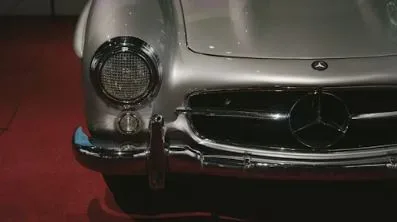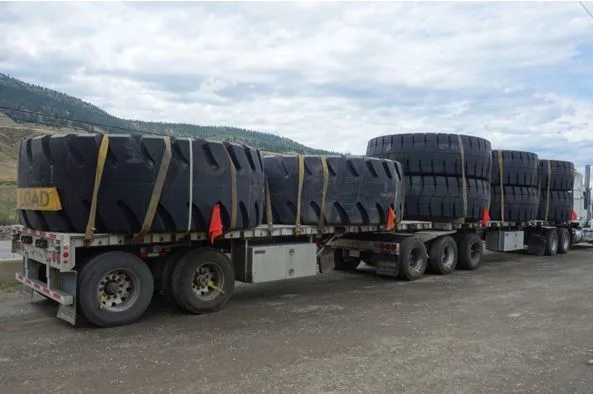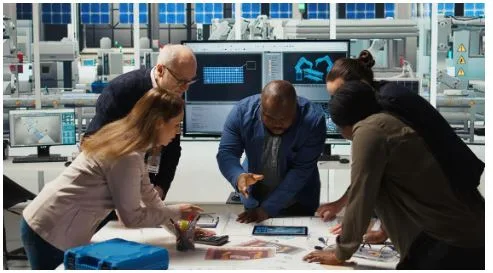Bespoke Taillights: The Contemporary Builders and Restorers Perspective on Engineering Masterpieces
Restoration and customization of vehicles has evolved over the years. Taillights, as an example, now serve functional safety roles — an artistic expression, a branding identity, sometimes a legal requirement as well. As bespoke builds and classic car restorations continue to capture the scalper automotive markets, custom taillights have carved their unique niche in the center of attention. For B2B auto parts distributors dealing with specialty garages, maintenance shops, and designers of bespoke vehicles, this trend cannot be ignored.
While custom processes on design parts may look simple, taillights serve more than an aesthetic purpose of enhancing a car’s beauty. In this article, we investigate the intricate interplay of shape, functionality, and supply chains concerning custom taillights. We will discuss what modern restorers and builders need to plan for, and what parts distributors are willing to do to shift in a market influenced by legacy design and contemporary systems.
The Purpose of Custom Taillights Beyond Aesthetics
The purpose of custom taillights may appear to be only an aesthetic enhancement, but there is certainly more to them. For the builders of show cars or restorers working on vintage cars, the taillight is usually the piece which completes the puzzle spanning across different time frames. Custom lights help in encapsulating the mood and design of the vehicle.
Custom function is as important as the design. Every custom taillight has to comply with legal requirements and regulations: brightness, color, visibility angles, and placement, all have to follow the legal guidelines, which differ from region to region. B2B customers need to have access to taillights that are decorative and functional at the same time, especially when the client expectations demand period accurate looks and street legality.
The need for these by design solutions has made it challenging for auto parts distributors who stock products that need to be both visually appealing and legally compliant. This unique duality is forcing many distributors to rethink and improve their entire sourcing and selection processes.
Problems Encountered When Finding Custom Tail Light Solutions
The sourcing and inventory management of custom taillights remains a hurdle as they are seldom mass-produced. Unlike typical OEM components, custom lights are often made in small batches, one-offs, or even 3D-printed. The availability of supply becomes ever more unpredictable. Additionally, it sometimes becomes a meaningful financial burden.
Restoration and Customization “Auto Parts Distributors,” as is known, face two contrasting necessities: variety and scalability. Fulfilling the needs of one client who requested for a smoked LED housing might alienate another client with a 1960s-era wrap around lens request. Ensuring both stock and compliance to quality guidelines alongside guarantee is a logistical nightmare.
Further, custom lighting component suppliers often work from the fringes of the aftermarket and may not have well-ordering systems or documented procedures. As a result, these suppliers end up making the entire supply chain more fragile. Distributors are building custom manufacturing partnerships with tailored supplier relationships meant to ensure service continuity by improving forecasting for these dwindling suppliers.
These factors redefine how the auto parts supply chain tackles the lower volume but high-variance product categories such as custom taillights.
Compliance and Legal Requirements: Strategies of Risk Management
For business-to-business buyers like shops that handle getting the vehicles back on the road, legality is a given. There are custom tail lights that have to comply with regional road safety mandates such as lumen output, signaling, reflecting, and light color.
Inability to comply with these standards may result in vehicles failing inspection, and in worse case scenarios, safety concerns. Restoration shops heavily depend on auto parts distributors to make sure the tail lights they carry are compliant. Distributors are more and more expected to supply some documentation, attest testing, and technical data even before the sale is closed.
Some progressive distributors are partnering with third party labs that offer compliance verification along with in-house testing. These layers of quality assurance tremendously increase trust, but also reduce return rates and liability.
Wiring compatibility is one of those aspects that are often overlooked. Many custom tail lights need to interface with older vehicles or modern complex electronics. Providing wiring harness kits, guidelines, and compatibility data is capturing value that leading distributors are offering as part of the package.
The Contribution of Distributors in the Education and Services of B2B Clients
The gap between the custom part’s existence and the customizing skill can be quite wide. At this point, distributors of auto parts come to the help of people who rehabilitate and build from the parts. In addition to procuring the parts, the builders need assistance regarding installation and alternative solutions as a matter of scholarly opinion.
By equipping themselves with digital catalogs which can be filtered according to the vehicle’s year of make, body’s model, and the wiring system, distributors can help simplify the shopping process. Numerous others are also expanding their educational materials like installation videos, compliance documentation, and part comparison guides specifically designed for B2B customers.
Other distributors are even offering design consulting services to assist builders in choosing lighting fixtures that go with a build’s style, while also complying with the relevant rules. Such a shift in approach transforms a transaction into a relationship poised to endure the test of time.
By taking on the role of teachers and working closely with clients, distributors of automobile parts and tail lights are integrating supplier pieces together and forming a stronger and more developed supply chain.
Technology, Customization, and the Future of Tail Light Innovation
The world of customizing tail lights has reached a new degree. The restoration and custom build industries are adopting features such as smart LEDs, dynamic turn signals, fiber optics, and programmable lighting sequences. While these technologies provide unprecedented aesthetic customization, they also require a greater level of technical skill for installation and operation.
Distributors of automotive parts autoparts distributors must adapt their capabilities with each advancement. Exoskeletal augmented reality technology that allows users to try on a taillight before it’s placed onto the vehicle, or ponytail and provide remote workmanship patches for programmable systems, is on the rise. These advancements were primarily accessible to OEMs, but are now permeating into the customization industry.
Other changes will stem from material science innovations, paving the way for lightweight, shatter-resistant polymers with exceptional light transmission, transparency, and higher refractive index. Builders looking to enhance aesthetically constructed vehicles will find this highly appealing.
On top of that, suppliers will have to enhance the client experience at the logistics level to remain competitive—smart stocking, tracking processes, and technological assistance will be crucial elements for modern B2B parts providers.
Final Remarks: Potential Value of Custom Taillights for Business Distributors
The evolving market geometry, driven by individualistic appeal and performance to a greater degree, indicates that custom taillights have outgrown a particular market niche and can now be treated as a market-wide possibility. Solutions like these provide modifications to vehicles with added beautifying touches. Grasping this opportunity in the B2B sector will mean deeper engagement with specialized manufacturers, understanding the nuances of compliance, and fortifying support structures.
Parts supply chain experts who fulfill customer’s expectations will gain an invaluable advantage. Servicing the burgeoning demand translates to capturing and enhancing market position rather than risking it, thus safeguarding business against future uncertainty in the economic climate.
Lighting solutions will become increasingly advanced as restorers and builders’ unrelenting creativity refuses to stop. The path becomes clearer for proactive distributors investing in such options.






